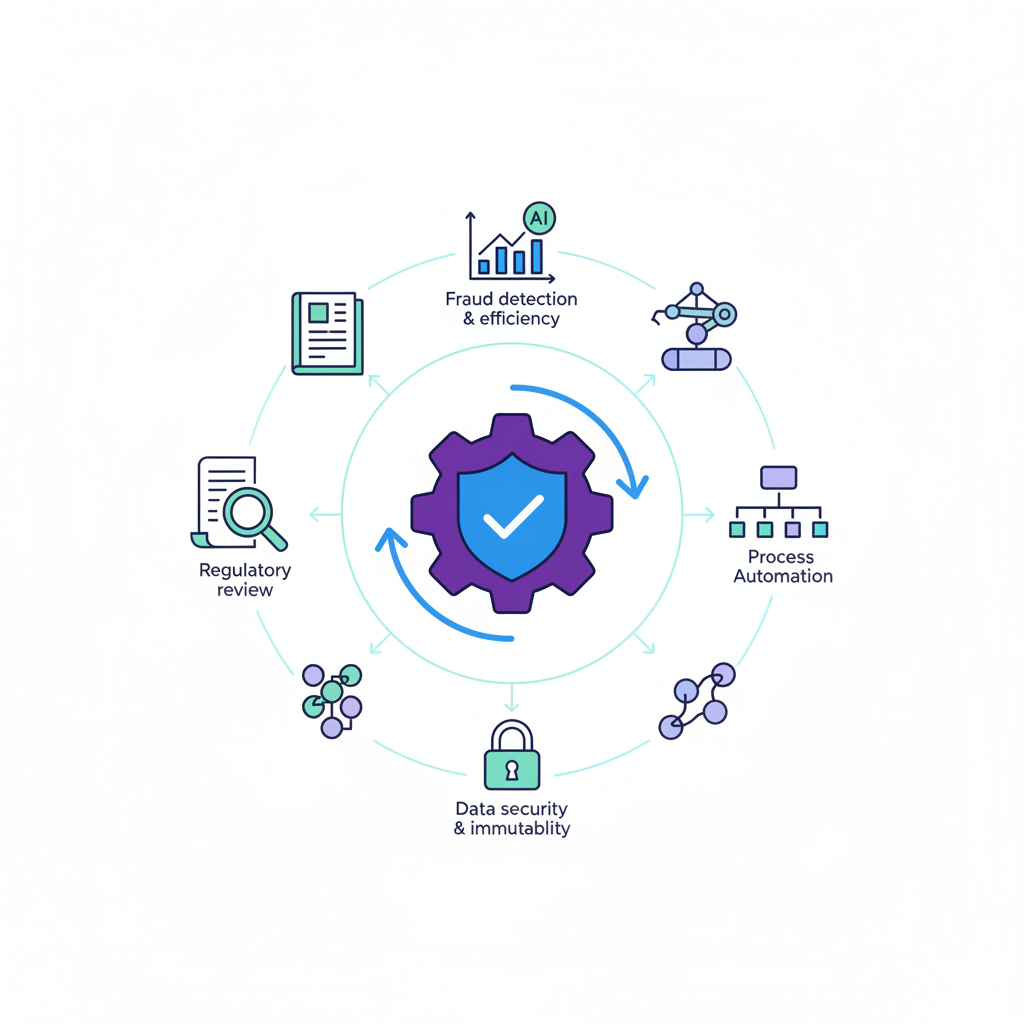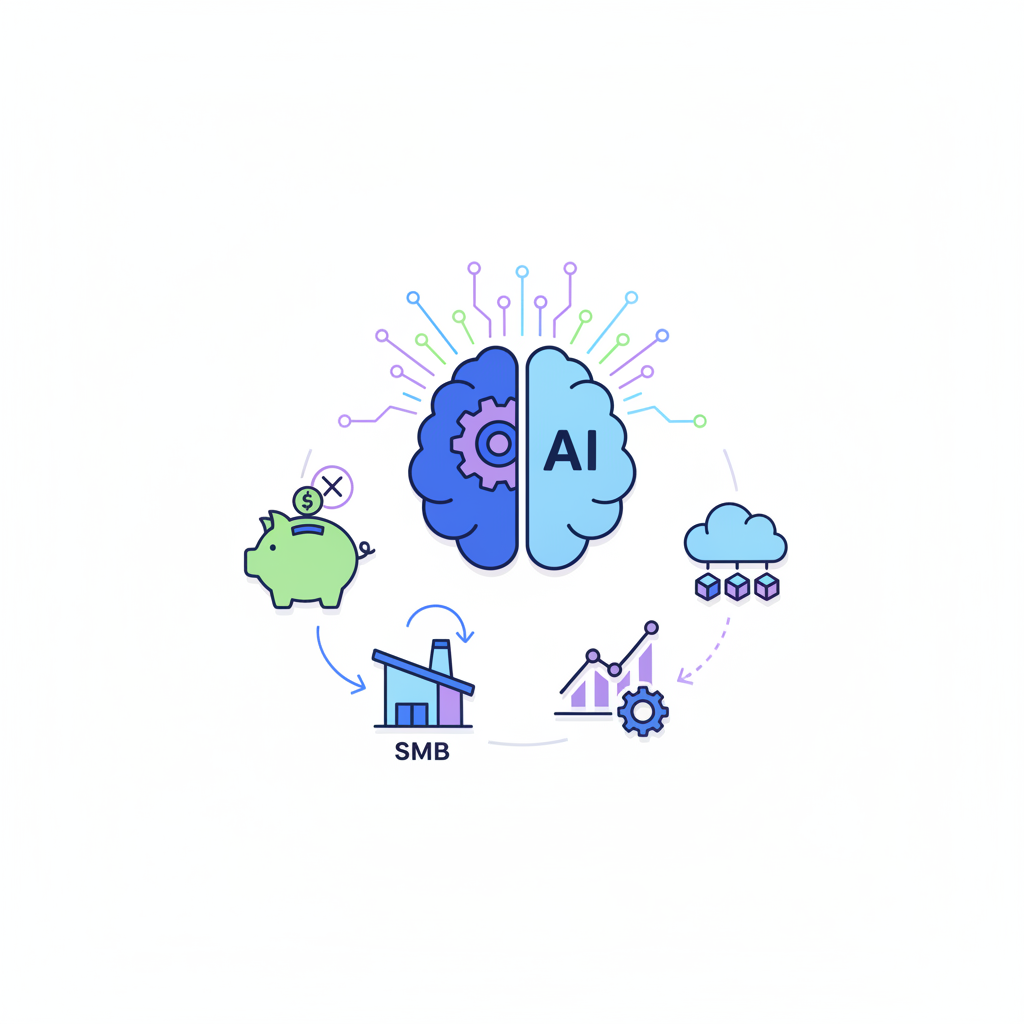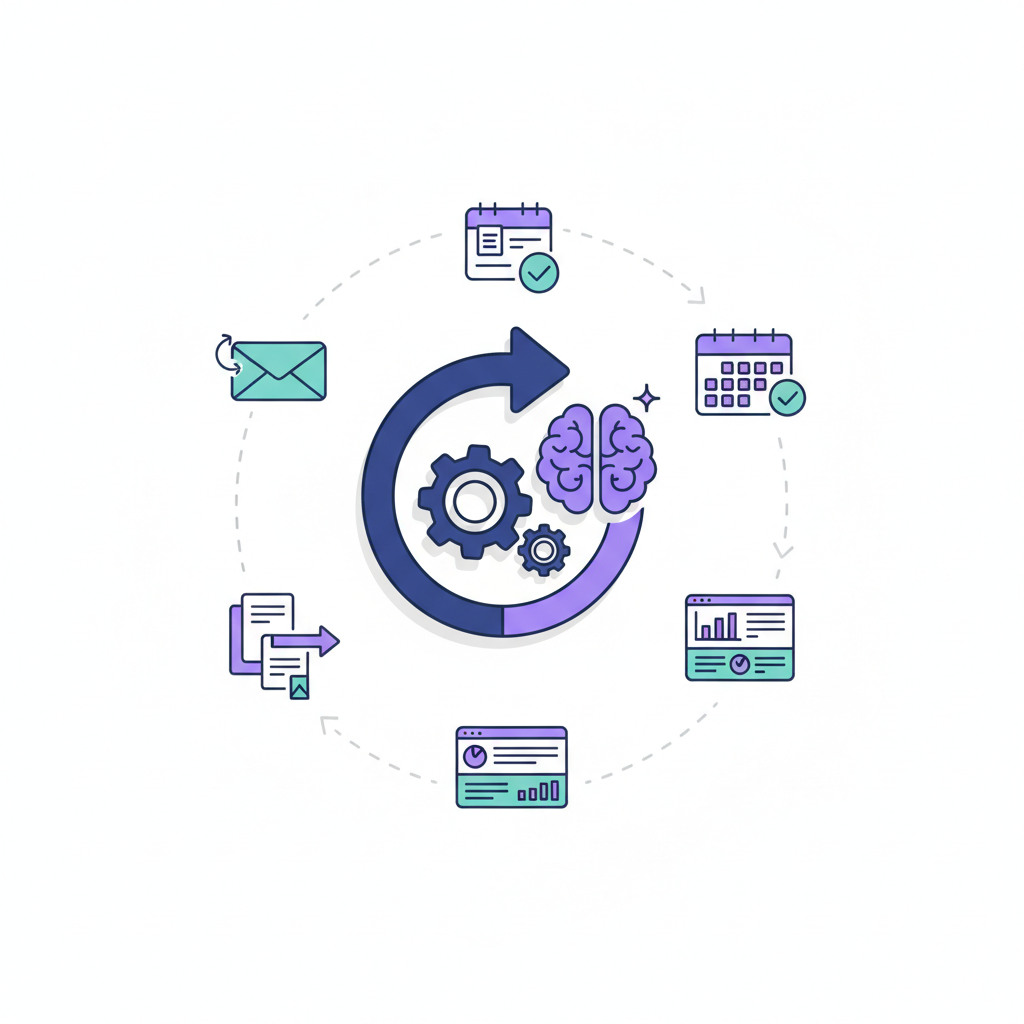Top 10 AI Tools for Customer Feedback Analysis
Discover the top 10 AI tools for customer feedback analysis in 2025, including Qualtrics XM, Medallia, Thematic, SentiSum, and more. Learn how AI transforms sentiment analysis, NPS tracking, and CX insights for data-driven decisions.

Unlocking Deeper Insights: The Power of AI in Customer Feedback Analysis
In today's hyper-connected digital landscape, businesses are inundated with an overwhelming volume of customer feedback. From social media comments and online reviews to survey responses, support tickets, and call transcripts, the sheer quantity of data can be paralyzing. Manually sifting through this deluge of information is not only incredibly time-consuming but also highly prone to human bias, often leading to missed critical insights that could drive significant business improvements. This traditional approach simply cannot keep pace with the demands of modern customer experience management.
The solution lies in leveraging advanced AI tools for customer feedback. These innovative platforms offer unparalleled efficiency, accuracy, and scalability, enabling organizations to gain a deeper understanding of their customers' needs, preferences, and pain points. By automating the feedback collection and analysis process, AI feedback analysis tools transform raw data into actionable intelligence, allowing businesses to make informed decisions faster than ever before. This guide will delve into the profound benefits of integrating AI into your feedback strategy, explain the core AI technologies that power these solutions, and provide a comprehensive review of the top 10 AI tools designed to revolutionize your customer feedback analysis. We will also offer a practical framework to help you choose the best tool tailored to your specific business requirements.
Beyond the Buzzword: How AI Transforms Customer Feedback Analysis
Artificial Intelligence is not just a buzzword; it's a transformative force reshaping how businesses interact with and understand their customers. When applied to customer feedback, AI customer feedback tools unlock a multitude of benefits, fundamentally changing the landscape of customer experience management. These benefits include vastly improved efficiency in processing large datasets, enhanced accuracy in identifying sentiment and themes, and unparalleled scalability to handle growing volumes of feedback. Ultimately, AI provides deeper insights, enabling proactive problem-solving and a significantly improved customer experience (CX).
At the heart of AI-driven feedback analysis are several core AI technologies:
- Natural Language Processing (NLP): This foundational AI technology allows computers to understand, interpret, and generate human language. NLP algorithms can parse unstructured text from surveys, reviews, and support interactions, extracting meaning and context that would be impossible for traditional software.
- Sentiment Analysis: A specialized application of NLP, sentiment analysis identifies the emotional tone behind customer comments, classifying them as positive, negative, or neutral. More advanced sentiment analysis can detect specific emotions like anger, joy, or frustration, providing nuanced insights into customer attitudes.
- Topic Modeling & Entity Recognition: These techniques go beyond surface-level understanding. Topic modeling automatically discovers recurring themes and hidden topics within vast amounts of text, revealing what customers are talking about most frequently. Entity recognition identifies and categorizes key entities mentioned in the text, such as product names, locations, or specific issues, allowing for granular analysis.
- Predictive Analytics: By analyzing historical feedback data and identifying patterns, AI can use predictive analytics to forecast future trends, anticipate customer behavior, and even predict potential churn, enabling businesses to take proactive measures.
While the benefits are clear, it's crucial to consider data security and privacy. When utilizing AI feedback analysis tools, ensuring compliance with regulations like GDPR and CCPA is paramount. Businesses must prioritize platforms that offer robust data encryption, anonymization capabilities, and strict access controls to protect sensitive customer information. Secure data handling is not just a legal requirement but a cornerstone of maintaining customer trust.
The Best AI Tools for Customer Feedback: A Deep Dive (Part 1)
Navigating the crowded market of AI feedback analysis tools can be challenging. To help you make an informed decision, we've compiled a list of the top 10 AI tools for customer feedback analysis, each offering unique strengths and capabilities. This section kicks off our detailed review, covering the first three powerful platforms that are setting industry standards. These tools leverage cutting-edge AI to transform raw customer data into actionable insights, helping businesses enhance their customer satisfaction and overall experience.
1. Qualtrics XM Platform
Overview: Qualtrics is a comprehensive experience management (XM) platform that helps organizations manage and improve customer, employee, product, and brand experiences. Its robust AI capabilities are central to its offering, making it a leader in the field.
Key Features: Omnichannel data collection (surveys, social, chat, voice), advanced text analytics, predictive analytics to anticipate future behavior, and seamless integration capabilities with CRM and other business systems. It excels at measuring CSAT and NPS across various touchpoints.
Underlying AI Tech: Utilizes sophisticated NLP for sentiment analysis and topic detection, machine learning for predictive modeling, and deep learning for understanding complex unstructured data.
Pros: Extremely powerful and scalable, excellent for large enterprises with complex CX programs, offers a holistic view of experience data, strong reporting and visualization.
Cons: Can be expensive, steep learning curve for new users, potentially overkill for smaller businesses.
Pricing Model: Enterprise-level, custom quotes based on needs and usage.
Best For: Large enterprises, organizations focused on comprehensive experience management, measuring CSAT/NPS across all touchpoints, and those needing predictive insights.
2. Medallia Experience Cloud
Overview: Medallia is another enterprise-grade platform renowned for its ability to capture and analyze customer feedback in real-time across all channels. It focuses on helping companies understand and act on customer signals instantly.
Key Features: Real-time feedback capture, AI-powered conversation intelligence for voice and text, robust text analytics, action orchestration to close the loop with customers, and role-based dashboards.
Underlying AI Tech: Advanced NLP and machine learning drive its conversation intelligence, sentiment analysis, and thematic analysis engines. It uses AI to identify root causes and recommend actions.
Pros: Exceptional real-time capabilities, strong focus on actionability, excellent for operationalizing feedback, robust for large organizations with high feedback volumes.
Cons: High cost, complex implementation, may require dedicated resources for full utilization.
Pricing Model: Enterprise-level, custom quotes.
Best For: Large organizations, real-time customer service insights, companies needing to quickly act on feedback, and those with extensive customer interaction data.
3. SurveyMonkey Apply / GetFeedback (by SurveyMonkey)
Overview: While SurveyMonkey is famous for its survey creation tools, its enterprise solutions like GetFeedback (for CX) and SurveyMonkey Apply (for application management) integrate AI for deeper insights. GetFeedback, in particular, focuses on delivering actionable CX insights.
Key Features: Intuitive survey creation, AI-driven insights for open-text responses, easy integration with Salesforce and other CRMs, customizable dashboards, and automated reporting.
Underlying AI Tech: Leverages NLP for sentiment analysis and keyword extraction from open-ended survey responses, helping to identify pain points and recurring themes efficiently.
Pros: User-friendly interface, strong integration with Salesforce, good for quick surveys and targeted feedback, more accessible pricing for SMBs compared to enterprise giants.
Cons: AI capabilities are more focused on text analytics within surveys, less comprehensive for omnichannel feedback compared to dedicated XM platforms.
Pricing Model: Tiered subscriptions, with advanced features and AI insights typically in higher-tier plans.
Best For: Small to medium businesses, organizations primarily relying on surveys for feedback, identifying specific pain points, and those seeking easy-to-use AI survey tools.
Leading AI Feedback Analysis Platforms: Reviews & Comparison (Part 2)
Continuing our exploration of the best AI tools for customer feedback analysis, this section delves into three more powerful platforms that excel in specific areas, from driving frontline performance to conducting deep thematic analysis. These AI feedback analysis tools are designed to streamline analysis, automate feedback processes, and provide invaluable insights for enhancing customer experience (CX). Each tool leverages sophisticated AI to help businesses make sense of vast amounts of customer data, turning it into strategic advantages.
4. AskNicely
Overview: AskNicely specializes in continuous feedback and driving frontline performance, primarily through Net Promoter Score (NPS) measurement. It's built to empower customer-facing teams with real-time insights.
Key Features: Automated feedback requests (via email, SMS, web), real-time NPS tracking, AI-powered text analytics for open-ended comments, frontline coaching tools, and integration with CRM systems.
Underlying AI Tech: Uses NLP to analyze open-text feedback from NPS surveys, categorizing comments by theme and sentiment to provide actionable insights for individual team members and managers.
Pros: Excellent for continuous feedback loops, strong focus on frontline employee engagement and coaching, simple and effective for NPS measurement, good for driving operational improvements.
Cons: Primarily focused on NPS, less comprehensive for other CX metrics or omnichannel feedback, AI capabilities are tailored to short-form survey responses.
Pricing Model: Subscription-based, often tiered by contact volume or features.
Best For: Companies focused on improving frontline performance, continuous feedback loops, NPS measurement, and empowering customer-facing teams with immediate insights.
5. Thematic
Overview: Thematic is a powerful AI tool specifically designed for deep thematic analysis of unstructured customer feedback. It excels at uncovering hidden patterns and emerging trends within large datasets of open-text responses.
Key Features: Advanced open-text analysis, automatic theme detection and categorization, customizable dashboards, sentiment scoring at a granular level, and the ability to combine feedback from multiple sources.
Underlying AI Tech: Employs advanced machine learning and NLP algorithms to identify themes, sub-themes, and sentiment within free-text data, going beyond simple keyword spotting to understand context and nuance.
Pros: Exceptional for deep qualitative insights, highly accurate theme detection, excellent for researchers and data analysts, can handle very large volumes of unstructured data.
Cons: Requires some expertise to set up and interpret, less focused on real-time action orchestration compared to full XM platforms, primarily an analysis tool.
Pricing Model: Enterprise-level, custom quotes based on data volume and features.
Best For: Researchers, data scientists, organizations needing deep qualitative insights from open-ended feedback, identifying emerging trends, and understanding the "why" behind customer scores.
6. SentiSum
Overview: SentiSum is an AI-powered platform that specializes in analyzing customer support interactions and other unstructured data to identify root causes of customer issues and improve service efficiency.
Key Features: Support ticket analysis, automated tagging of issues, root cause identification, granular sentiment scoring, trend detection, and integration with helpdesk systems (e.g., Zendesk, Intercom).
Underlying AI Tech: Utilizes advanced NLP and machine learning to process support tickets, chat logs, and call transcripts, automatically categorizing issues, extracting entities, and determining sentiment to pinpoint problem areas.
Pros: Excellent for customer support teams, helps reduce churn by identifying recurring problems, improves service efficiency, provides actionable insights for product and service improvements.
Cons: Primarily focused on support data, may not be as comprehensive for broader CX initiatives, requires integration with existing support systems.
Pricing Model: Subscription-based, often tied to data volume or number of users.
Best For: Customer support teams, companies looking to reduce contact volume, identify root causes of customer dissatisfaction, and improve overall service quality.
Innovating with AI: More Top Tools for Customer Insights (Part 3)
Our journey through the leading AI tools for customer feedback analysis continues with four more innovative platforms that offer diverse capabilities for collecting, analyzing, and acting on customer insights. These tools represent the cutting edge of AI text analytics, helping businesses not only understand their customer feedback but also identify trends and enhance their overall experience management strategies. From unified feedback views to custom AI models, these solutions empower organizations to gain a competitive edge.
7. Chattermill
Overview: Chattermill provides a Unified Customer Intelligence platform that uses AI to analyze feedback from all sources, giving businesses a holistic view of their customer experience and identifying key drivers of satisfaction and dissatisfaction.
Key Features: Unified feedback view across channels (surveys, reviews, social, support), driver analysis to pinpoint what impacts CX most, predictive insights, and customizable dashboards for different teams.
Underlying AI Tech: Employs advanced NLP and machine learning to process vast amounts of unstructured text, automatically categorizing feedback, extracting themes, and performing sentiment analysis to reveal actionable insights.
Pros: Excellent for a holistic CX view, strong driver analysis capabilities, helps identify key areas for improvement, good for cross-functional teams.
Cons: Can be complex to set up initially due to its comprehensive nature, pricing may be higher for smaller businesses.
Pricing Model: Enterprise-level, custom quotes.
Best For: Companies seeking a unified view of all customer feedback, identifying the key drivers of satisfaction/dissatisfaction, and improving overall experience management.
8. Clarabridge (now part of Qualtrics)
Overview: Clarabridge, now integrated into the Qualtrics XM Platform, was a pioneer in omnichannel text analytics. It specialized in transforming unstructured customer data from various sources into actionable intelligence, particularly for large enterprises.
Key Features: Omnichannel text analytics (voice, text, social, surveys), industry-specific AI models, sophisticated root cause analysis, sentiment and emotion detection, and robust reporting.
Underlying AI Tech: Utilized advanced NLP, machine learning, and deep learning to process complex unstructured data, with a strong focus on contextual understanding and industry-specific terminology.
Pros: Extremely powerful for complex unstructured data, highly accurate insights, strong for regulatory compliance and risk management, enterprise-grade scalability.
Cons: High cost, significant implementation effort, typically suited for very large organizations with extensive data analysis needs.
Pricing Model: Integrated into Qualtrics XM platform, custom enterprise pricing.
Best For: Large enterprises, organizations dealing with vast amounts of complex unstructured data, those requiring industry-specific insights, and companies with stringent regulatory compliance needs.
9. MonkeyLearn
Overview: MonkeyLearn is a versatile AI platform that allows users to build custom text classification and sentiment analysis models without writing code. It's ideal for developers and businesses needing flexible, custom AI solutions.
Key Features: Custom text classification, sentiment analysis API, keyword extraction, topic detection, no-code interface for model building, and seamless integration into existing workflows.
Underlying AI Tech: Provides access to powerful machine learning algorithms for text analysis, allowing users to train custom models with their own data for highly specific and accurate results.
Pros: Highly customizable, flexible for various text analysis tasks, good for developers and data scientists, offers a free tier for testing, integrates well via API.
Cons: Requires some technical understanding to build effective custom models, not an out-of-the-box CX platform, more of a toolkit than a complete solution.
Pricing Model: Free tier, then tiered subscriptions based on usage and features.
Best For: Developers, data scientists, businesses needing custom AI models for text analysis, integrating AI into existing applications, and those with unique classification requirements.
10. Idiomatic
Overview: Idiomatic is an AI-powered platform focused on helping companies understand and act on customer support insights. It automates the tagging and analysis of support conversations to reduce contact volume and improve agent efficiency.
Key Features: Automated tagging of support tickets, trend detection in customer issues, root cause analysis, sentiment analysis within support interactions, and integration with helpdesk systems.
Underlying AI Tech: Uses advanced NLP and machine learning to analyze customer support conversations (tickets, chats, calls), identifying common issues, sentiment, and emerging trends to provide actionable insights.
Pros: Excellent for optimizing support operations, helps reduce contact volume, improves agent efficiency, provides clear insights into customer pain points from support data.
Cons: Primarily focused on support data, may not offer the breadth of analysis for broader CX initiatives, requires integration with existing support infrastructure.
Pricing Model: Subscription-based, often tied to data volume or number of support interactions.
Best For: Customer support teams, companies looking to optimize their support operations, reduce contact volume, and improve agent efficiency by understanding common customer issues.
Navigating the Options: How to Choose the Best AI Feedback Analysis Tool
Selecting the ideal AI feedback analysis tool is a critical decision that can significantly impact your customer experience strategy and overall business success. With so many powerful options available, it's essential to approach the selection process systematically. The "best" tool isn't universal; it's the one that perfectly aligns with your specific business needs and objectives.
1. Assessing Your Business Needs: Start by clearly defining your specific goals. Are you looking to improve CSAT scores, reduce customer churn, identify product gaps, or enhance agent efficiency? Understanding your primary objectives will narrow down the field considerably. For instance, if your goal is to improve customer satisfaction, you'll prioritize tools with strong sentiment analysis and action orchestration features.
2. Data Sources and Volume: Consider where your customer feedback originates and the volume of data you handle. Do you primarily collect feedback through surveys, or do you have a wealth of data from social media, online reviews, call center transcripts, and chat logs? Some tools excel at omnichannel data collection and analysis, while others are more specialized. Ensure the tool can ingest and process your specific data types and handle your current and projected data volume.
3. Budget and Pricing Models: AI tools for customer feedback come with various pricing structures, including subscription tiers, usage-based costs, and enterprise-level custom quotes. Clearly define your budget and understand the potential return on investment (ROI). A higher-priced tool might be justified if it delivers significantly greater insights and efficiency.
4. Integration Capabilities: Seamless integration with your existing technology stack is crucial. Can the AI tool connect with your CRM (e.g., Salesforce), customer support platforms (e.g., Zendesk), marketing automation tools, and data warehouses? Good integration ensures a unified view of customer data and streamlines workflows.
5. Specific Goals: CSAT, NPS, CES: If your primary focus is on specific customer satisfaction metrics like CSAT (Customer Satisfaction Score), NPS (Net Promoter Score), or CES (Customer Effort Score), look for tools that offer robust measurement, tracking, and analysis capabilities for these indicators. Many tools provide specialized dashboards and reporting for these key metrics.
6. Feedback Analysis vs. Customer Service Tools: It's important to clarify the distinction and overlap. While many AI tools for customer service can automate responses or route tickets, feedback analysis tools are designed to extract insights from feedback to inform strategic decisions. However, these analysis tools empower service teams by providing them with a deeper understanding of customer issues, allowing them to improve processes and proactive support, rather than just automating service interactions. Choose a tool that provides the analytical depth you need, even if it has some service automation capabilities.
What's Next? Future Trends in AI Customer Feedback Analysis
The landscape of AI tools for customer feedback is continuously evolving, promising even more sophisticated and impactful capabilities in the near future. As technology advances, we can expect several key trends to shape how businesses gather, analyze, and act on customer insights, further revolutionizing experience management. These innovations will allow organizations to identify trends with unprecedented speed and accuracy, moving towards a truly proactive approach to customer satisfaction.
One significant trend is the shift towards Predictive Analytics & Proactive CX. Future AI tools for customer feedback will move beyond merely identifying current issues to accurately forecasting future customer needs, potential churn, and emerging market demands. This will enable businesses to transition from reactive problem-solving to proactive customer experience strategies, addressing issues before they even arise.
Another exciting development is Multimodal Feedback & Hyper-Personalization. AI will become adept at analyzing a wider array of feedback types, including voice inflections from call recordings, facial expressions from video feedback, and even biometric data, alongside traditional text. This multimodal analysis will create a richer, more nuanced understanding of individual customers, paving the way for hyper-personalized experiences and truly individualized service.
The growing importance of Ethical AI and Bias Mitigation will also be a critical focus. As AI systems become more autonomous in their analysis, ensuring fairness, transparency, and accountability will be paramount. Future tools will incorporate mechanisms to detect and mitigate biases in data and algorithms, ensuring that insights are equitable and do not inadvertently discriminate against certain customer segments.
Finally, expect to see an emphasis on Real-time, Contextual Insights. The goal is to deliver actionable data not just quickly, but precisely at the moment of need. Imagine an AI system providing an agent with a customer's sentiment and historical pain points during a live conversation, or alerting a product manager to an emerging bug trend as it happens. This immediate, context-aware intelligence will empower faster, more effective decision-making across all business functions.
FAQs About AI Customer Feedback Analysis
Q: Which AI technology can be used to analyze customer feedback?
A: The primary AI technologies used to analyze customer feedback are Natural Language Processing (NLP), which helps AI understand human language; Sentiment Analysis, which identifies the emotional tone; and Topic Modeling, which uncovers recurring themes. Machine learning algorithms are also crucial for pattern recognition and predictive analytics. These AI tools for feedback collection and analysis work in concert to extract deep insights.
Q: What is the best tool to measure customer satisfaction (CSAT/NPS)?
A: Many excellent AI tools can measure CSAT and NPS. Platforms like Qualtrics XM, Medallia Experience Cloud, and AskNicely are highly regarded for their robust capabilities in collecting, analyzing, and reporting on these key customer satisfaction metrics. The "best" tool depends on your specific scale, budget, and integration needs.
Q: What is the best AI tool for customer service?
A: While many AI tools for customer service focus on automation (like chatbots), tools like SentiSum and Idiomatic are excellent for analyzing customer service interactions. They help identify root causes of issues, improve agent efficiency, and reduce contact volume by providing insights from support tickets and conversations, rather than just automating responses.
Q: Can AI tools automate feedback collection?
A: Yes, many AI tools can automate feedback collection. They integrate with various channels (email, SMS, web, in-app) to automatically send surveys, request reviews, or capture feedback from digital interactions. This automation ensures a continuous flow of data, making the process more efficient and scalable.
Q: How do AI tools help identify customer pain points?
A: AI tools identify customer pain points primarily through NLP, sentiment analysis, and topic modeling. They process vast amounts of unstructured feedback (e.g., open-text survey responses, review comments, support tickets) to automatically detect negative sentiment associated with specific themes or entities. By aggregating and categorizing these negative mentions, AI can quickly highlight recurring issues and emerging problems that customers are experiencing.
Empowering Your CX Strategy with AI-Driven Insights
The digital age has ushered in an unprecedented volume of customer feedback, presenting both a challenge and a profound opportunity for businesses. As we've explored, the traditional methods of manual analysis are simply no match for the scale and complexity of today's customer data. This is where the transformative power of AI tools for customer feedback truly shines, offering an indispensable solution for organizations aiming to stay competitive and customer-centric.
By leveraging AI feedback analysis tools, businesses can unlock deeper insights, automate feedback collection and analysis, and move beyond surface-level understanding to truly grasp the nuances of customer sentiment. We've reviewed a diverse range of top AI tools, from comprehensive experience management platforms like Qualtrics and Medallia to specialized solutions like Thematic for deep qualitative analysis and SentiSum for optimizing customer support. Each offers unique strengths, demonstrating the breadth of innovation available to enhance your customer feedback analysis.
Embracing AI in your customer feedback strategy is no longer a luxury but a necessity. It empowers you to make data-driven decisions, proactively address customer needs, and ultimately foster stronger, more loyal customer relationships. We encourage you to explore the listed tools, assess them against your specific business requirements, and take the decisive step towards implementing AI for a superior customer experience. The future of customer understanding is intelligent, and it's time to empower your CX strategy with AI-driven insights.
Featured Tools

10Web is an AI-powered WordPress platform that offers automated website building, hosting, and optimization with AI assistance for content and image generation.

A global creative platform connecting businesses with freelance designers for custom graphic design projects.

A1.art is an AI art generator that transforms text descriptions into unique digital artworks across various styles.

Acquire.io is a customer engagement platform offering live chat, AI chatbots, co-browsing, and video chat to enhance customer support and sales.

A customer experience automation platform combining email marketing, marketing automation, and CRM with AI-powered personalization.
Top AI Categories
Related Articles

AI for financial services: compliance & automation
Discover how AI is revolutionizing financial services through advanced compliance automation, real-time fraud detection, regulatory reporting, and hyper-personalized customer experiences. Explore the future of intelligent, efficient, and secure banking.

How SMBs can adopt AI without big spending
Discover how small and medium businesses can adopt AI affordably. This practical guide covers low-cost tools, quick wins, real-world examples, and step-by-step strategies to integrate AI without breaking the bank.

Top 10 AI tools for Enterprise Workflow Automation
Enterprises are turning to AI-powered workflow automation to eliminate manual processes, cut costs, and accelerate strategic execution. Unlike traditional automation, AI can handle unstructured data and make intelligent decisions, offering profound benefits across finance, HR, and IT. This guide curates the top 10 AI tools—from RPA leaders like UiPath and Automation Anywhere to iPaaS solutions like Workato and low-code platforms like Microsoft Power Automate—providing a blueprint for building a more agile and resilient organization.